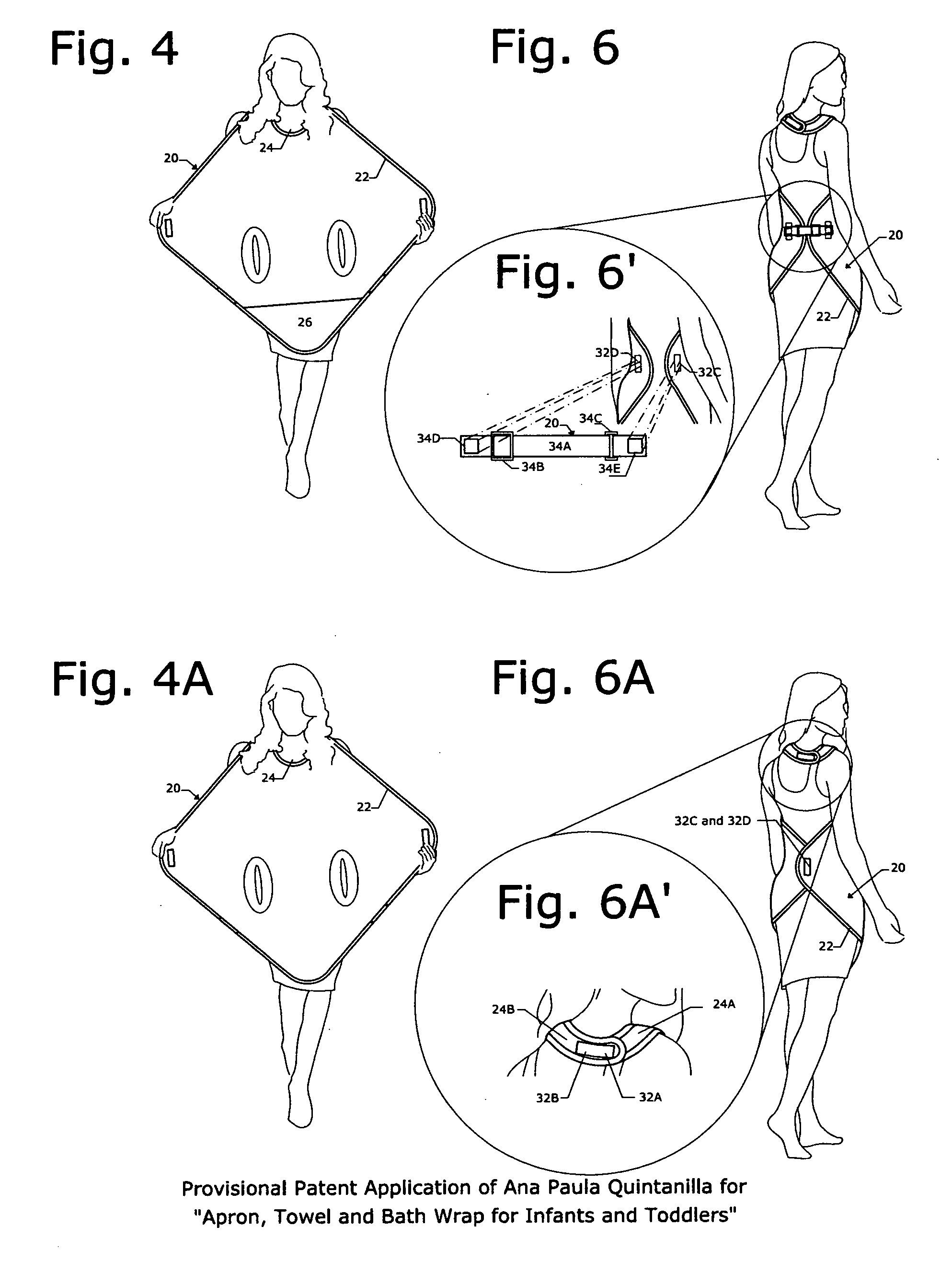Apron, towel and bath wrap for infants and toddlers
a technology for bathing and toddlers, which is applied in the direction of protective clothing, beach clothing, garments, etc., can solve the problems of affecting the comfort of infants and toddlers, and affecting the comfort of caregivers, so as to reduce the workload of cleaning and drying infants and toddlers, and be compact and portable.
- Summary
- Abstract
- Description
- Claims
- Application Information
AI Technical Summary
Benefits of technology
Problems solved by technology
Method used
Image
Examples
example —
Example—Infant
It was that time of day again where I had to give my newborn a warm bath. But this time, it was going to be a different experience: for the first time, I picked up my new apron, towel baby wrap. I couldn't believe how light it was as I opened it!
I followed the instructions and wore it as an apron by putting the Velcro tabs together around my neck and then around my waist. It was so easy! I gave my baby a fun bath while I was wearing the towel and I felt so comfortable and happy since I knew that the towel I needed for my baby was around me.
Once I was ready to take my baby out of the bath, I opened the apron from around my waist with just one hand, while holding my baby (still in the tub) with the other hand. Then I carefully slid one arm at a time through the slits in the towel (while still holding my baby with the other arm) and carefully picked up my baby then put him directly on my chest and then easily wrapped the rest of the towel around him.
I was so happy to have...
example — toddler
Example—Toddler
Bathing my two year old girl became a totally different experience once I started using my new apron, towel and bath wrap: I was so happy the first time I used it. I just followed the instructions and wore it as an apron by putting the Velcro tabs together around my neck and then around my waist. My daughter had so much fun splashing around in the water and for once, I didn't get upset because I stayed dry!
Once my daughter was ready to come out of the bath, I released the Velcro tabs from around my waist and put the hood on her head. Then, I was able to wrap the towel around her by releasing the Velcro closure from around my neck. I lifted her out of the bath and was able to dry her immediately since the towel was already around her. I then realized that I had forgotten to prepare her clothes. Instead of having to carry her across the hallway so that she doesn't drop the towel while walking, I simply put her arms through the slits and closed the rest of the towel arou...
PUM
 Login to View More
Login to View More Abstract
Description
Claims
Application Information
 Login to View More
Login to View More - R&D
- Intellectual Property
- Life Sciences
- Materials
- Tech Scout
- Unparalleled Data Quality
- Higher Quality Content
- 60% Fewer Hallucinations
Browse by: Latest US Patents, China's latest patents, Technical Efficacy Thesaurus, Application Domain, Technology Topic, Popular Technical Reports.
© 2025 PatSnap. All rights reserved.Legal|Privacy policy|Modern Slavery Act Transparency Statement|Sitemap|About US| Contact US: help@patsnap.com



